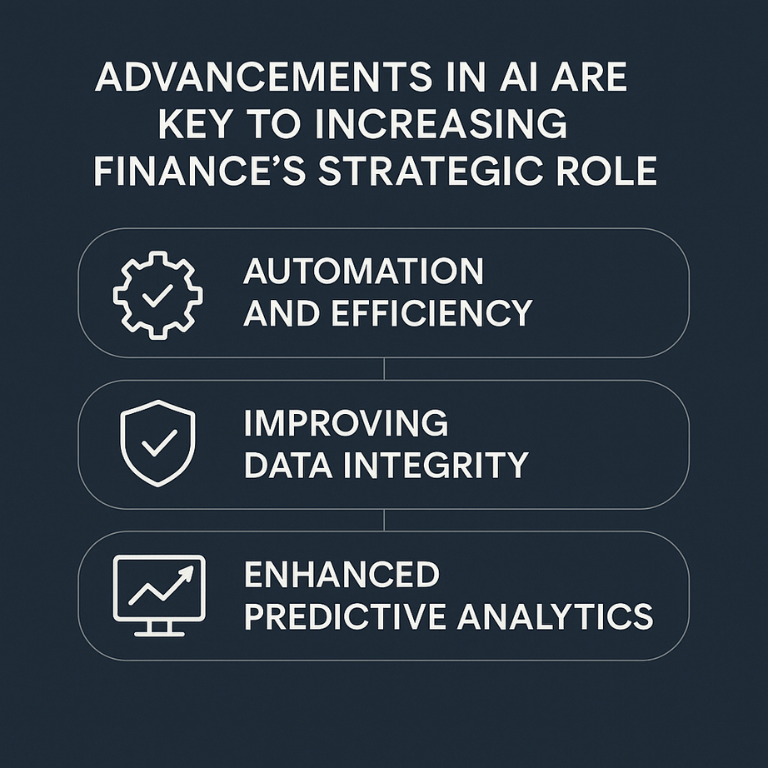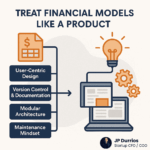Under GAAP, we need to reflect Finance and People functions as G&A under OPEX (Operating Expenditures). That view is compliance-driven and not representative of modern versions of these functions’ full impact on business growth and innovation.
GAAP was created in 1930, almost a hundred years ago, and the business world has changed significantly since then.
When your startup is in growth mode, labeling those functions as “cost centers” invites misconceptions and potential risks for sustaining growth and innovation.
Some have argued that you’re either shipping or selling; nothing else really matters. That would be short-sighted and limit the company’s future prospects. After all, what are you selling if you don’t have the people to sell? What are you building if you don’t have the finances to invest?
In this edition, I explore how those functions play a critical role in startups’ success and how they can continue to elevate their contributions by embracing AI.
Strategic Advantages of Cross-Organizational Visibility
In addition to the CEO, the Finance and People functions, by the nature of their roles, have more holistic insights into operational dynamics, resource allocations, workforce productivity, and market responsiveness across the organization.
In short, they are best equipped to connect the dots and detect emerging trends, opportunities, or inefficiencies that could significantly impact organizational performance.
Of course, other functions will have a closer and more real-time pulse on their respective areas, but it will likely be limited to their focus and, therefore, more isolated.
Finance and people functions benefit from that unique perspective.
Foundational Support Activities That Enable Other Functions to Create Value
It takes a village, as they say. Every function contributes to a startup’s success. Support functions like Finance and People play their part in providing the foundational layer, or platform, that enables other functions to be the “tip of the spear.”
For example:
- Having enough cash and a comfortable runway gives your company the flexibility to invest in growth without worrying about survival.
- When your financial planning is accurate, aligned with company strategy, and grounded in practical insights, your team can consistently make smarter decisions.
- Having the right talent on board who is engaged and empowered to perform its best work means the company will achieve its goals and objectives.
The CEO and the rest of the leadership team depend on these to have the necessary line of sight and get things done.
To keep this edition short, I chose to focus on Finance, but I’d be happy to share my thoughts on how similar concepts apply to People teams if that’s of interest.
Advancements in AI are Key to Increasing Finance’s Strategic Role
AI represents a fantastic opportunity in Finance, enabling teams to pivot from routine tasks to strategic problem-solving. But there isn’t a magic button to press. You need to invest in the AI stack and infrastructure that makes sense for your team and business model, and do it deliberately over time. You can’t go from “zero-to-hero” overnight here; it’s all too new for everyone.
For example, you could start by incorporating AI-driven predictive analytics to enhance your financial forecasting, like JPMorgan Chase did. They developed a proprietary AI tool called Coach AI to deliver personalized investment advice. The result? A 20% increase in sales while the rest of the market succumbed to volatility. It worked because it was a defined use case, allowing them to make proactive decisions.
So, where do you focus your efforts?

Automation and Efficiency
AI allows for automating monotonous tasks such as data entry and report generation, freeing FP&A and Accounting teams to focus on more value-added initiatives that drive growth.
For example, LiveRamp implemented Auditoria for collections dunning and month-end accrual workflows. Thanks to NLP bots handling collections touchpoints instead of analysts, they shortened the month-end close.
Improving Data Integrity
You know the saying: “Garbage in, garbage out.” Any robust financial strategy requires a solid data foundation. AI and automation now play an essential role in validating and spotting abnormalities in the data before you use it in your model, and it can do it at scale and get better over time.
A good example is Carta’s recent implementation of Pigment, which cut their data aggregation and manual calculation times by 80%!
Enhanced Predictive Analytics
AI-enhanced predictive analytics revolutionize financial planning and enable smarter budgeting, optimized capital allocation, and proactive identification of potential financial pitfalls, such as fraud or market volatility. These capabilities strengthen financial stability, improve investor confidence, and support data-driven investment decisions.
I’ve seen it first-hand at MarketShare. Our platform’s insights and predictive capabilities opened realms of possibilities that C-suite executives didn’t think were possible.
As you can see, leveraging AI in Finance or People functions doesn’t mean you have to build or code anything. Using the right AI-powered vendors to get the job done is totally fine as long as the ROI is there.
New skills and competencies to become strategic growth enablers
The new tech is not enough. If anything, it further requires your teams to develop critical skills to realize the impact:
Ability to Deliver AI-Driven Insights
Finance teams need to become comfortable using AI tools like ChatGPT or whichever LLM their organization chooses, combined with automation applications like Zappier, Make, or n8n.
Strategic Partnership
That one needs to happen regardless of AI. Finance professionals must become strategic partners rather than back-office functions. This involves developing strong communication and influencing skills to guide cross-functional teams effectively, as suggested by Oliver Deacon Coaching.
Get inspired by industry CFO leaders. Microsoft’s CFO, for example, has been sharing how she’s transforming her organization to become AI-native.
Organizational Design and Talent Management Strategies to Become Agile, Strategic Partners to Business Operators
Agile organizational designs and strategic talent management are crucial for Finance and People teams to become proactive partners with business operators in tech startup environments. Here are key strategies to achieve this:
- Adopt Agile Methodologies: Finance teams can take a page from how engineering and product teams run, adopting agile methods to become quicker and more connected with the business. Instead of traditional setups, try small groups focused on specific goals, completing shorter work cycles. This approach helps people feel ownership over their projects and encourages them to collaborate naturally across FP&A, AP, AR, and beyond (Versapay, How To Structure a Modern Finance Department).
- Implement Cross-Functional Teams: Cross-functional teams bring together diverse expertise towards a common goal, increasing collaboration and efficiency. This structure is particularly effective for addressing complex business challenges.
- Rethink Hierarchical Structures: Agile organizations often adopt flatter structures, reducing bureaucracy and encouraging employee mobility and dynamic roles, leading to greater adaptability and innovation (McKinsey & Company, The five trademarks of agile organizations).
- Empower and Develop Talent: In agile environments, employees can step up, take initiative, and push key priorities forward. Leaders need to be coaches, helping people grow and creating a strong, collaborative team built to adapt and innovate.
- Foster Role Mobility: This is not a big company move at all. Encourage role mobility to ensure employees gain diverse experiences and insights, enhancing their ability to contribute strategically across the organization.
- Select Talent Aligned with Agile Culture: Recruit individuals who fit your agile culture by focusing on adaptable, collaborative, and innovative people. It helps maintain a cohesive team environment that drives strategic outcomes.

Final Thought
Finance and People leaders still need to measure and communicate the value of their teams’ contributions and earn a seat at the proverbial table through influence.
Savvy CEOs know these teams aren’t just keeping the lights on but actively pushing the business forward.
As business increasingly revolves around data, people, and tech innovation, putting real resources into your Finance and People teams can give you a crucial edge.
That doesn’t necessarily mean adding more people to those teams; it could just mean providing them with the means to invest in and build their own AI capabilities so they can make a greater impact.
So ask yourself: What specific steps are your Finance and People teams taking today to drive growth in your business?








